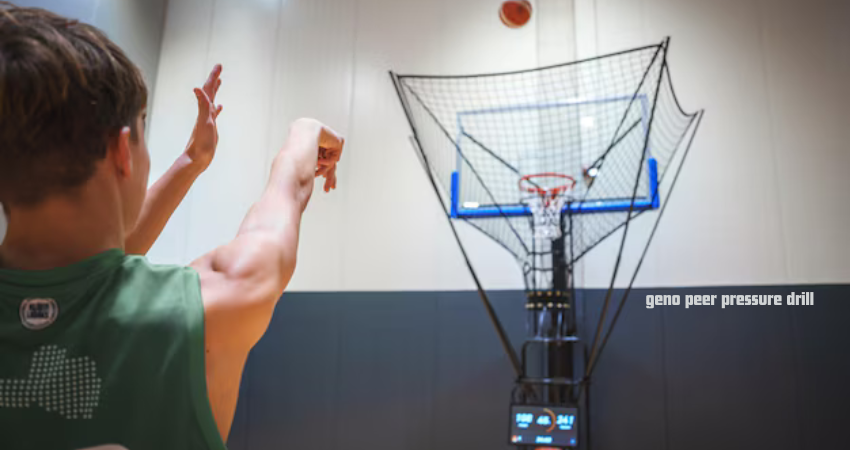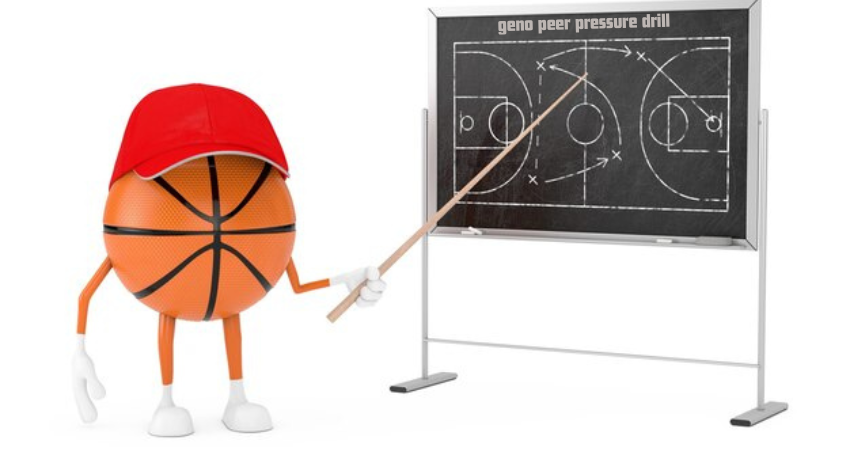Amid the roaring tides of human innovation, there exists a phenomenon as enigmatic as it is potent—a drill, not of steel and grit, but of psychology and purpose. This is the story of the geno peer pressure drill, a cultural and social artifact born in whispers, forged in unity, and wielded in moments of defiance and strength. Let us journey through its origins, evolution, and enduring legacy, threading together the tales of those who shaped its path and the forces that gave it meaning.
Origins in the Shadows of Humanity
The Genesis of Collective Action
Long before the geno peer pressure drill had a name, it existed in principle—a shared rhythm of humanity’s innate need for unity. Anthropologists trace its early essence to the ancient tribes of Mesopotamia and Africa, where survival often hinged on group conformity. To hunt, to gather, to build—peer pressure was less a tactic and more an instinctual harmony.
In these early days, the “drill” wasn’t a structured ritual but a symphony of subtle cues: a glance that commanded compliance, a murmur that swayed decisions. Leaders emerged, not as tyrants, but as conductors of these social currents. It was in this primordial soil that the seeds of Geno’s essence were sown.

The Whisper of Geno: A Forgotten Legend
The term “Geno” is said to stem from genos, the ancient Greek word for “kind” or “race.” Though it bears no direct ties to Greek mythology, folklore tells of an elusive figure named Geno—a leader of a mysterious order whose power lay not in brute force but in persuasive unity.
Geno’s disciples practiced drills designed to instill loyalty and cohesion. These exercises, though archaic, bore striking resemblance to modern psychological experiments: synchronized movements, shared chants, and collective challenges that bound participants in unyielding solidarity.
But Geno’s story fades into obscurity, swallowed by time. Was Geno a person, a concept, or a fabrication? The truth lies shrouded in the veils of antiquity.
The Age of Codification: From Folklore to Framework
Medieval Echoes of the Drill
The essence of the Geno Peer Pressure Drill resurfaced during the medieval era, albeit in fragmented forms. Guilds, armies, and religious orders used rituals akin to peer-pressure drills to enforce discipline. Knights honed their loyalty through repetitive training, while monks adhered to unbreakable routines.
A particularly vivid example comes from the 14th-century Knights of Genoa, whose chants of unity and synchronized movements bore uncanny similarities to modern practices. Coincidence? Or was this an echo of Geno’s forgotten drills?
Psychology Enters the Arena
By the Enlightenment period, philosophers and thinkers began to dissect the mechanisms of human behavior. Rousseau wrote of the “general will,” a concept tied to collective conformity, while Machiavelli explored the power of group dynamics in The Prince.
These ideas served as a precursor to the eventual crystallization of the Geno Peer Pressure Drill, bridging ancient practices with emerging scientific understanding. The Enlightenment wasn’t merely an age of reason—it was the dawn of humanity’s understanding of itself, laying the foundation for Geno’s revival.
The Drill Takes Form: Industrial Precision Meets Social Unity
The Birth of Structured Drills
As the world entered the Industrial Revolution, the Geno Peer Pressure Drill emerged in a new guise. Factories demanded synchronized labor, armies required discipline, and schools imposed regimens to mold young minds. Peer pressure, once subtle and organic, was now institutionalized.
Military academies, particularly those in Europe, refined drills to instill obedience and camaraderie. The Geno Peer Pressure Drill was no longer a myth; it was a practical tool for unity and efficiency.
The Social Experiment Era
The early 20th century marked a turning point. Psychologists like Solomon Asch and Stanley Milgram began conducting experiments to study conformity and authority. Their findings mirrored the principles underlying the Geno Peer Pressure Drill: humans, when placed in groups, often conform to collective will, even against personal judgment.
The drill, now a subject of both fascination and controversy, took on a dual identity: a symbol of unity and a cautionary tale of manipulation.
The 20th Century: Rise, Fall, and Resurgence
A Dark Chapter: The Abuse of Peer Pressure
World War II brought the Geno Peer Pressure Drill to its darkest chapter. Propaganda, fear, and conformity were weaponized by totalitarian regimes, demonstrating the destructive potential of collective pressure.
Yet, in the aftermath, the drill became a tool for rebuilding. Civilians turned to community movements, finding solace and strength in shared rituals. Activists harnessed the drill’s essence for peaceful protests, from Gandhi’s Salt March to the Civil Rights Movement in the United States.
The Countercultural Rebellion
By the 1960s, a wave of countercultural movements challenged the notion of conformity. The Geno Peer Pressure Drill, once a tool of unity, faced backlash. “Do your own thing” became the rallying cry of a generation seeking individuality over collective identity.
Yet even in rebellion, the drill’s influence lingered. Protesters, musicians, and artists employed collective chants, synchronized movements, and shared ideals—proof that the drill’s spirit was indomitable.
The Modern Era: Rediscovery and Reinvention
The Corporate World and Team-Building
Today, the Geno Peer Pressure Drill finds new life in corporate culture. Team-building exercises, motivational seminars, and synchronized activities reflect its enduring principles. Companies like Google and Tesla incorporate these drills to foster unity, innovation, and resilience.
Psychology Meets Technology
The digital age amplifies the drill’s impact. Social media, with its algorithms and echo chambers, creates modern peer-pressure drills on a global scale. Trends go viral, movements gain momentum, and individuals feel compelled to conform—or resist—in unprecedented ways.
The Geno Peer Pressure Drill, now more than ever, is a double-edged sword: a force for unity and a challenge to authenticity.

Cultural Legacy: Beyond Borders and Time
Art and Literature
The Geno Peer Pressure Drill has inspired countless works of art and literature. From dystopian novels like 1984 to films like Dead Poets Society, the drill’s themes resonate across mediums, exploring the tension between individuality and conformity.
A Tool for Good
In recent years, educators, psychologists, and activists have reclaimed the drill’s principles for positive change. Anti-bullying campaigns, mental health initiatives, and grassroots movements use collective pressure to uplift rather than oppress.
The drill, once shadowed by controversy, now illuminates paths to empathy and empowerment.
Conclusion: The Eternal Dance of Unity and Individuality
The history of the geno peer pressure drill is a tapestry of triumph and tragedy, innovation and introspection. It is a testament to humanity’s dual nature: our yearning for connection and our quest for selfhood.
As we stand on the precipice of the future, the drill remains a reminder of the power we wield together. Its legacy is not merely in its history but in its potential—a force that, when guided by wisdom and compassion, can shape a world that dances to the rhythm of unity and individuality alike.


